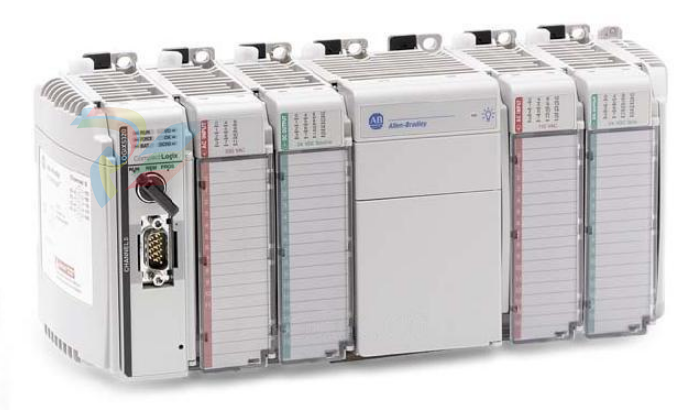
Relay Output vs Solid State Output Modules
In industrial automation, choosing the right output module is essential to ensure long-term system reliability, performance, and compatibility. This guide compares the two main types of discrete output modules used in PLC systems: relay outputs and solid-state outputs. By understanding their differences in design, operation, and application, you can make informed decisions about which type to use for your specific needs.
In the context of a PLC (Programmable Logic Controller), an output refers to the hardware components that transmit the PLC's control signals to field devices such as motors, pumps, solenoids, and lights. These outputs can either be:
-
Discrete (digital): ON/OFF control
-
Analog: Variable signal output (e.g., 4-20 mA or 0-10 V) – not covered in this article
In discrete outputs, the PLC closes or opens an electrical circuit to energize or de-energize a device.
Output modules can either be onboard (built into the PLC) or modular (connected externally). Regardless of format, outputs are critical in interfacing PLC logic with real-world equipment.
Relay output modules use electromechanical relays to switch circuits. These consist of a coil and a movable contact set. When voltage is applied to the coil, it creates a magnetic field that moves the contact to complete (or break) the circuit.
Key Characteristics:
-
Voltage Independent: Can switch AC or DC loads regardless of coil voltage
-
Isolation: Full electrical isolation between control and load sides
-
Durability: Mechanical parts wear out over time (limited lifecycle)
-
Contact Types: Normally Open (NO) or Normally Closed (NC)
-
Switching Speed: Slower switching (10–20 ms typical)
-
Dry Contact Capability: Can act as a signal-only switch with no voltage supplied
Best for: High-voltage or high-current loads, mixed voltage applications, and dry contact signaling.
Solid-state outputs use semiconductor devices to switch loads with no moving parts. The two main types are:
-
Transistor Outputs (for DC loads)
-
Triac Outputs (for AC loads)
Common Features:
-
Fast Switching: Response times under 1 ms
-
Longer Lifespan: No mechanical wear
-
Voltage Sensitive: Not voltage independent; designed for specific AC or DC loads
-
No Dry Contact Use: Cannot provide a true open circuit (slight leakage possible)
-
Sinking vs. Sourcing (Transistor Only):
-
Sinking (NPN): Switches negative leg
-
Sourcing (PNP): Switches positive leg
-
Drawbacks:
-
Leakage Current: Small voltage may still pass through when OFF
-
Heat Generation: Due to resistance in semiconductors
-
Limited Load Capability: Cannot handle as much current as relays
Best for: High-speed, low-power applications using DC (transistor) or small AC loads (triac).
| Feature | Relay Output | Solid-State Output (Transistor) | Solid-State Output (Triac) |
|---|---|---|---|
| Switching Type | Mechanical | Electronic | Electronic |
| Voltage Type | AC & DC | DC Only | AC Only |
| Isolation | Yes | Yes | Yes |
| Switching Speed | Slow | Fast | Fast |
| Load Capacity | High | Low | Medium |
| Lifespan | Lower | Higher | Higher |
| Leakage Current | None | Possible | Possible |
| Dry Contact Use | Yes | No | No |
| Typical Use | Motors, starters | Solenoids, valves | Lighting, HVAC relays |
Example 1: AC Pump Control
-
Need: Switch 110VAC to a motor starter coil
-
Load: 1.2A, slow duty cycle
-
Solution: Relay Output
-
Handles AC voltage
-
Supports higher load
-
True OFF state ensures magnetic coil deactivates completely
-
Example 2: High-Speed Air Valve
-
Need: Trigger 24VDC valve 60x/min
-
Load: 0.2A
-
Solution: Solid-State Transistor Output
-
High-speed switching
-
Long operational life
-
Low current draw
-
Example 3: Lighting Control (Building Automation)
-
Need: Switch 24VAC lighting relays
-
Load: Low to medium
-
Solution: Solid-State Triac Output
-
Handles AC
-
Longer life than mechanical relays
-
Tolerable leakage in lighting circuits
-
Understanding the distinction between relay and solid-state output modules is essential for designing a reliable automation system. Each type has specific advantages depending on the application's speed, voltage, load type, and switching frequency. When in doubt, match your output module’s capabilities to your field device’s requirements to avoid premature failure and ensure long-term performance.
For assistance with selecting PLC output modules or complete control system solutions, contact PLG Automation at sales@plgautomation.com or 800-906-9271.
